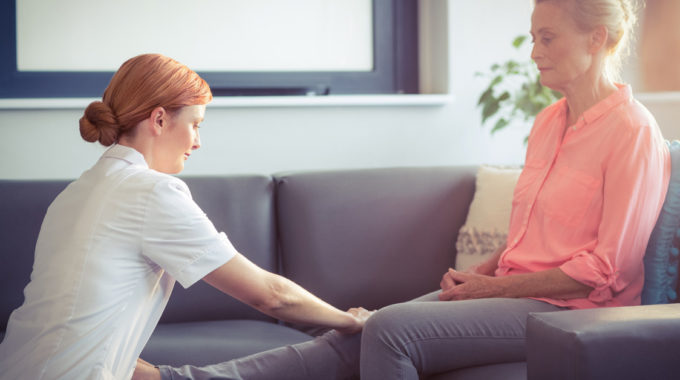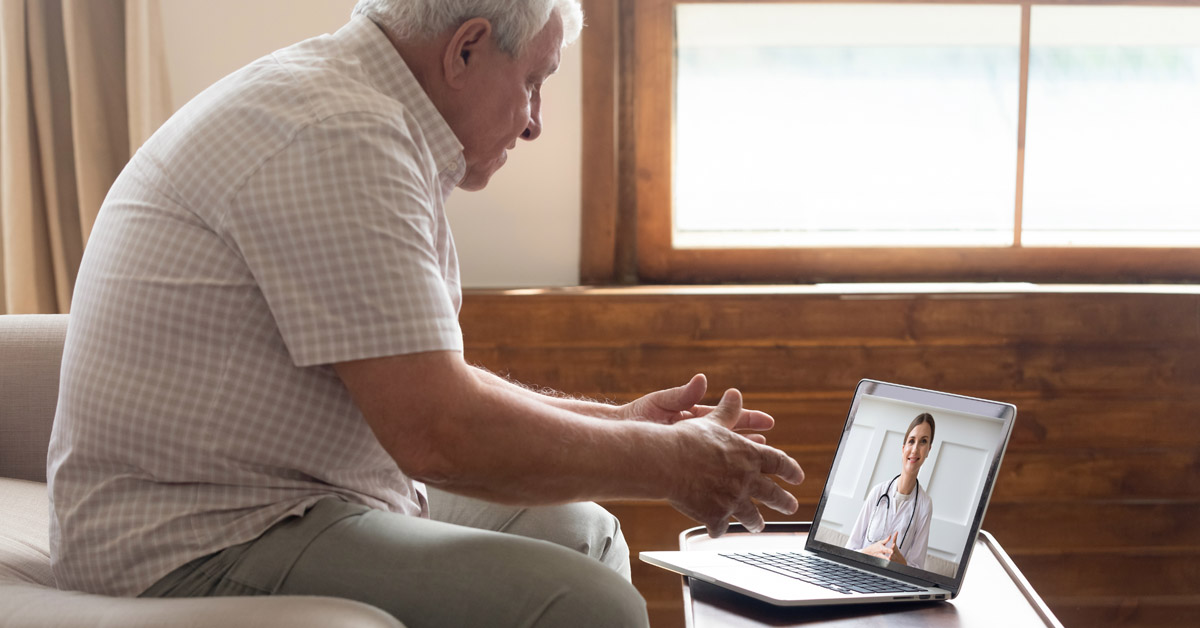
Is It Safe for Seniors Who Live Alone to Go Straight Home After Knee Surgery?
In a word, “yes.” The individual judgment of professional care planners should determine the settings for rehab, but research shows that seniors who live alone can return home safely after total knee replacements. In the United States, the rate of total knee replacements has increased 1100% (elevenfold) since 1980.1 The greater need for these expensive surgeries puts an obvious strain on healthcare budgets. One bright spot in this situation is the increased availability of home health rehab. Many of these patients are seniors, and in decades past, more of them had to spend weeks in a nursing home or rehab facility after their hospital discharge. Home health rehab helps keep the costs down. Medicare pays 100% with no out-of-pocket costs to seniors.
Where are People Receiving Rehab after Knee Replacements?
Today, many of these seniors with total knee replacements go straight home from the hospital. They receive nursing and physical therapy through home visits. This costs Medicare thousands of dollars less per surgery. However, the percentage of people receiving home health versus inpatient rehab varies widely by surgeon, hospital, and country. In Australia, nearly 40% of privately-insured patients with knee replacements receive inpatient rehab.2 In the U.S. and Switzerland, inpatient rehab following this surgery occurs at high rates. On the other hand, in Canada and the U.K., inpatient rehab following this procedure is relatively uncommon. If the U.S. handled knee replacement rehab the same as Canada and the U.K., healthcare costs could be much lower, but would this be in the best interest of patients?
Is Inpatient Rehab Better than Home Health Rehab?
Inpatient rehab certainly costs thousands more than home health rehab. It’s easy to assume that what costs more must be better. In terms of the physical therapy itself, this turns out to not be the case. A large meta-analysis combining the results of 18 studies and including 1,739 patients concluded the following: in-home physical therapy achieves faster improvements in range of motion compared to center-based physical therapy, and center-based rehab has no outcome advantages over in-home rehab.3
On a more nuanced note, home health cannot truly be better than skilled nursing facility care, because they are simply different programs for different situations. We explored this topic more fully in: Which is Better, Home Health or Skilled Nursing Facilities?
The Research on Seniors Who Live Alone Returning Home After Knee Surgery
One of the reasons the U.S. sends more patients to inpatient rehab may be a general belief that seniors cannot live at home alone after a knee surgery. How will they bathe themselves safely, get groceries, do household chores, etc.? Home health agencies can send nursing assistants to help with bathing and household cleaning while patients recover. Home health will typically send these assistants two or three times per week. Is this enough? Some hospitals were planning rehab as if the answer were “no,” while others were discharging to home health routinely.
To answer this question, Dr. Andrew Fleischman, of the Rothman Institute, and colleagues followed more than 900 patients after their total knee replacements. All the patients were seniors living alone. The Journal of Bone & Joint Surgery recently published their work.4 Patients who lived alone and were sent to home health spent an extra day in the hospital compared to those who would go to inpatient rehab. This was probably to make sure those patients were ready to largely take care of themselves. Between the home care and the inpatient rehab, there were no differences in complications or unplanned medical care. This suggests that home rehab was just as safe for seniors living alone as inpatient rehab. Patient satisfaction scores were equivalent.
In conclusion, patients appear equally satisfied between the in-home approach and the inpatient approach. Both patients and Medicare can save money when seniors go straight home after knee surgeries. Inpatient rehab is not superior to in-home rehab in terms of outcomes. Patient wishes and the judgement of care planners should always be heeded, but, beyond that, research shows that seniors who live alone can manage safely at home after total knee replacements.
References:
- Maradit Kremers H, Larson D, Crowson C, et al. Prevalence of total hip and knee replacements in the United States. J Bone Joint Surg Am. 2015; 97 (17): 1386-1397.
- Hart A, Bergeron S, Epure L, et al. Comparison of US and Canadian perioperative outcomes and hospital efficiency after total hip and knee arthroplasty. JAMA Surg. 2015; 150 (10): 990-998.
- Artz N, Elvers KT, Lowe CM, Sackley C, Jepson P, Beswick AD. Effectiveness of physiotherapy exercise following total knee replacement: systematic review and meta-analysis. BMC Musculoskeletal Disorders. 2015 Dec;16(1):15.
- Fleischman AN, Austin MS, Purtill JJ, Parvizi J, Hozack WJ. Patients living alone can be safely discharged directly home after total joint arthroplasty: a prospective cohort study. JBJS. 2018 Jan 17;100(2):99-106.






